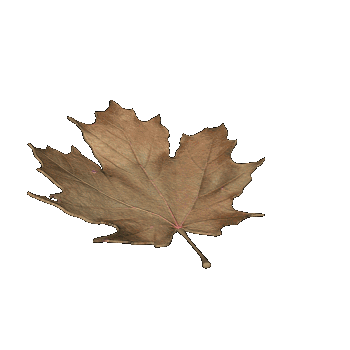Shortests 📜 Poems

A Leaf
Falls...
Loneliness.
Falls...
Loneliness.

This was the shortest Poem I knew...


....Until I heard the shortest poem in the English language.
It consists of
1 Question & Only 2 Words.
“I,
Why?”
and this is so far the shortest Poem I've heard !
by The American poet Eli Siegel

E.E. Cummings “a leaf falls loneliness” written in 1958.
This
poem, which I consider to be a very beautiful poem, construct-wise and
visually, is seemingly simple, containing few words, and conveying what
seems on the surface to be a simple message, yet underlying this is a
complexity of multiple meanings. The poem is a paradox – simple yet
complex.
l(a
le
af
fa
ll
s)
one
l
iness
Horizontally, the poem reads “a leaf falls loneliness” with ‘a leaf falls’ inserted into the word loneliness “l(a leaf falls)oneliness”.
Written like this, as a sentence, these four words are evocative, almost like a haiku, but in the vertical form it is written in, a single lonely column of artfully divided consonants and vowels, it represents and becomes so much more than a single four word statement.
Rushworth Kidder described the poem as a “brief description of autumn”.
l(a
le
af
fa
ll
s)
one
l
iness
Horizontally, the poem reads “a leaf falls loneliness” with ‘a leaf falls’ inserted into the word loneliness “l(a leaf falls)oneliness”.
Written like this, as a sentence, these four words are evocative, almost like a haiku, but in the vertical form it is written in, a single lonely column of artfully divided consonants and vowels, it represents and becomes so much more than a single four word statement.
Rushworth Kidder described the poem as a “brief description of autumn”.
E.E. Cummings was an American poet, and in America the season of Autumn is referred to as Fall. So the word ‘falls’ in the poem literally means a leaf falling, but the word can also reference the fact that leaves fall in the Autumn (or Fall).
The construct of the poem suggests the descent of a falling leaf, as the poem falls down the page. The parentheses also could represent the twisting and turning of the leaf as it falls, twisting in its descent one way then the other, shown by the ‘(‘ bracket symbol and the following ‘)’ bracket. The leaf can also be seen twisting and turning in the transposed letters of the lines ‘af’ and ‘fa’, the leaf flutters back forth on its way downwards. A single falling leaf is the universal symbol for loneliness. The basic adjective ‘a’, as an indefinite article, can be seen to represent singularity and therefore loneliness. It is ‘a’, a single falling leaf, lonely, and alone. The poem looks fragile, almost like it could blow away on the breeze, like a leaf in autumn waiting for that final breeze to detach it from the tree.
Leaves have other symbolic meaning too.
The construct of the poem suggests the descent of a falling leaf, as the poem falls down the page. The parentheses also could represent the twisting and turning of the leaf as it falls, twisting in its descent one way then the other, shown by the ‘(‘ bracket symbol and the following ‘)’ bracket. The leaf can also be seen twisting and turning in the transposed letters of the lines ‘af’ and ‘fa’, the leaf flutters back forth on its way downwards. A single falling leaf is the universal symbol for loneliness. The basic adjective ‘a’, as an indefinite article, can be seen to represent singularity and therefore loneliness. It is ‘a’, a single falling leaf, lonely, and alone. The poem looks fragile, almost like it could blow away on the breeze, like a leaf in autumn waiting for that final breeze to detach it from the tree.
Leaves have other symbolic meaning too.
In the poem “Christabel”, by Samuel Taylor Coleridge, lines 48-52, are setting up suspense and the leaf is used as a symbol that something is about to fall.
There is not wind enough to twirl
The one red leaf, the last of its clan,
That dances as often as dance it can,
Hanging so light, and hanging so high,
On the topmost twig that looks up at the sky.
In E.E. Cumming’s “l(a” poem, the word ‘one’ also stands alone, singled out from the word loneliness, and the second ‘l’ in loneliness stands all by itself, and with a multiple meaning because it looks like the number 1, which is a singular entity. The poem even looks lonely like a solitary figure, as the vertical arrangement gives the poem a shape of a 1.
The words are even fragmented, separate, lonely.
I love this poem by E.E. Cummings because he has deconstructed these four words and yet constructed so much more by rearranging the words in a visually stunning way, creating so many meanings and interpretations. This arrangement gives the poem a complexity of meaning that belies its simplicity.
These are my musings on the poem, but there are plenty more interpretations.
This poem is topical as the season is now Autumn and the leaves are falling, but the real reason why I mention this poem is because in Mum’s kitchen, on the fridge, I discovered a poem she had written out of fridge magnets and it looks very much like E.E. Cummings “l(a” poem. Mum is not familiar with E.E. Cummings works, but I was instantly reminded of the poem through the wording, the message and the visual arrangement.



There is not wind enough to twirl
The one red leaf, the last of its clan,
That dances as often as dance it can,
Hanging so light, and hanging so high,
On the topmost twig that looks up at the sky.
In E.E. Cumming’s “l(a” poem, the word ‘one’ also stands alone, singled out from the word loneliness, and the second ‘l’ in loneliness stands all by itself, and with a multiple meaning because it looks like the number 1, which is a singular entity. The poem even looks lonely like a solitary figure, as the vertical arrangement gives the poem a shape of a 1.
The words are even fragmented, separate, lonely.
I love this poem by E.E. Cummings because he has deconstructed these four words and yet constructed so much more by rearranging the words in a visually stunning way, creating so many meanings and interpretations. This arrangement gives the poem a complexity of meaning that belies its simplicity.
These are my musings on the poem, but there are plenty more interpretations.
This poem is topical as the season is now Autumn and the leaves are falling, but the real reason why I mention this poem is because in Mum’s kitchen, on the fridge, I discovered a poem she had written out of fridge magnets and it looks very much like E.E. Cummings “l(a” poem. Mum is not familiar with E.E. Cummings works, but I was instantly reminded of the poem through the wording, the message and the visual arrangement.





No comments:
Post a Comment